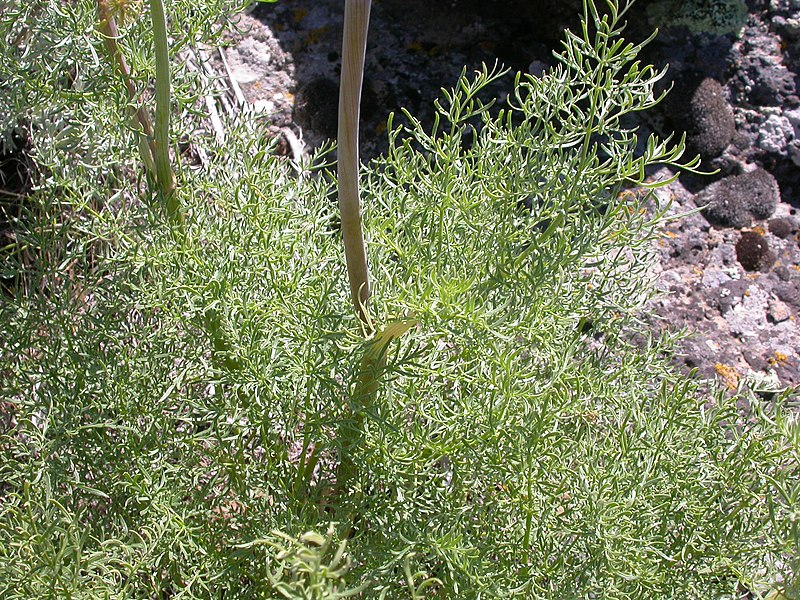Native Americans were the first to recognize the substantial benefits of fernleaf biscuitroot (Lomatium dissectum var. dissectum), which thrives in open, rocky slopes and meadows. A perennial, the plant is native to the West Coast from British Columbia to northern California and in northern Idaho.
Fernleaf biscuitroot, a member of the Apiaceae (carrot) family, is one of more than seventy-five species of Lomatium. The plant has a life cycle of more than three seasons, growing to a height of from 20 to 59 inches. It produces purple, maroon, or yellow flowers as well as oblong fruit that grows directly from the stem.
The plant has many curative properties that Native peoples used for an array of health ailments. The root is the primary medicinal part of the plant, and is commonly taken internally as a decoction, or concentrated essence. An external decoction may be applied to cuts, sores, and rashes. The portion of the plant above ground is smoked for the treatment of coughs, colds, hay fever, bronchitis, asthma, influenza, pneumonia, and tuberculosis. The Northern Paiutes of southeastern Oregon, the Okanagans of British Columbia and Washington, the Thompson River Indians of British Columbia, and the Nez Perces of Idaho have all used fernleaf biscuitroot for medicinal purposes.
The first reported awareness of fernleaf biscuitroot among non-native people came during the 1918 influenza pandemic. Researchers in Nevada discovered that none of the people of the Washoe tribe, who used the plant to treat the illness, died from the flu or its complications, while tribes who did not use it suffered deaths.
Fernleaf biscuitroot dramatically reduces viral count and has been effective for the treatment of viral infections, influenza, respiratory infections, and chronic fatigue. Currently, there is no commercial development underway except by contract planting, but Native Americans continue to use the plant in traditional ways.
-
![]()
Fernleaf biscuitroot, 2009.
Courtesy Matt Lavin, Wikimedia Commons
Further Reading
Alstat, Dr. Edward K. "Lomatium Dissectum: An Herbal Virucide?" Complimentary Medicine (May/June 1987).

